
Curiousspounge/iStock/Getty Images
For a variety of reasons, including preferences of taste and the possibility of food allergies, it’s a good idea to know which foods contain shellfish. Indeed, crustaceans are one of the eight major food allergens, the others being milk, eggs, fish, wheat, tree nuts, peanuts and soybeans. By law, the US Food and Drug Administration requires that any packaged food product with shellfish as an ingredient list the name of the shellfish on the label. Shellfish appear in meals both as whole foods and in the sauces and seasonings that adorn them.
Crustaceans
Crustaceans include shrimp, crab, crawfish and lobster, but often the presence of these foods will be disguised under other names, both in food packaging and on restaurant menus. "Prawn" and "crevette" are both commonly substituted for shrimp, while "crayfish" and "ecrevisse" are alternative names for crawfish. Lobster goes by other names, including "langouste," "langoustine," "scampo," "coral" and "tomalley," according to the Food Allergy Initiative. Soups with "chowder" or "bisque" in their names also likely contain crustaceous species.
Mollusks
Mollusks are another type of shellfish, although not all mollusks have shells. Despite this, many people who are allergic to common crustaceans are also allergic to mollusks, advises the Food Allergy Initiative. Mollusks include abalone, clams, cockles, mussels, oysters, octopi, scallops, snails -- also known as esgargot -- and squid, or calamari. Fried calamari is a popular restaurant appetizer, and scallops are frequent additions to pasta dishes in authentic Italian restaurants. Dishes containing octopus and squid are commonly served as part of sushi platters.
Wet Items
Condiments and sauces may contain shellfish products. Fish stock, for example, may contain the shells of shrimp with ingredients like celery, onion and bay leaf. Some Japanese brands of miso, a fermented soybean paste very widely used in daily Japanese cuisine, contain fish stock, according to the International Vegetarian Union. A common ingredient in Thai home cooking is shrimp paste, made from salt, fish and shrimp; it is used to add flavor to sauces and curries.
Dry Items
Spices and seasonings are another potential source of shellfish in foods. Restaurants may use a variety of powdered ingredients derived from shellfish. Among these are clam broth base powder, crab extract powder, shrimp powder, scallop extract powder, oyster juice powder and lobster extract powder, varieties of which are made by Nikken Products. When dining at Asian restaurants, ask if any of these dry items are used as seasonings.
Related Articles

How to Tell if Shrimp Is Not Fresh
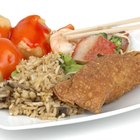
Restaurants on 50th - 52nd Street in ...

Can You Make Sweet and Sour Without ...
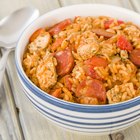
List of Cajun Food
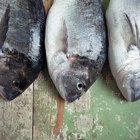
How to Cook Tarakihi
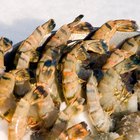
Tiger Prawns vs. Shrimp

Jumbo Shrimp Nutritional Facts
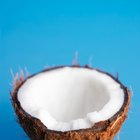
How to Cook Nigerian Coconut Rice

How to Make Prahok Sauce

Is Miso Soup Vegan?

Is Grocery Store Fish Safe for Sushi?

How to Cook Silver Fish Filipino Style

Precautions With Fully Cooked Frozen ...
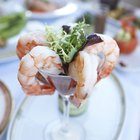
How Long Can Shrimp Be Refrigerated?

Food Sources of Phosphatidylcholine
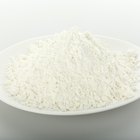
Foods With Calcium Phosphate
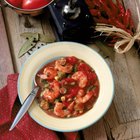
Difference Between Gumbo and Etouffee
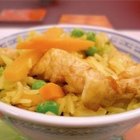
Types of Asian Food

How to Bake a Whole Cat Fish

Will Cream of Tartar Whiten Teeth?
References
Writer Bio
Adam Dave, M.D., has written both fiction and nonfiction since 1997. His most recent work, "The Paradigm Diet," a short course on applied nutrition, is available on Amazon. He holds a medical degree from Medical University of the Americas and trained in family medicine at the University of Colorado.
Photo Credits
Curiousspounge/iStock/Getty Images